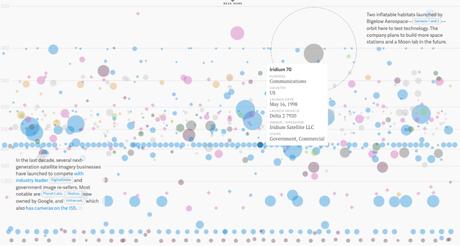Data visualization is a brilliant method of data representation. It helps you interpret customers, so it provides valuable insights to improve your sales strategy and your customer relationships, enrich shoppers' buying experience, and feed their needs.
There are various types of data visualization, such as infographics, diagrams, interactive videos, charts, images, and tools to help you use data visualization e-commerce and enjoy its benefits.
In this post, you will learn:
- The importance of visuals
- Benefits of data visualization for e-commerce
- The need for a dashboard
- Becoming a data-driven business
So, keep reading to learn more!
The importance of visuals
To understand the importance of visual resources in marketing strategies. For that, you have to determine the type of data that needs to be analyzed daily. Putting all this information in a simple visual format will help you to gain quicker insights and become a data-driven business.
Data visualization makes it possible by using shapes, charts, and information distributed in the visual space. The most important factor is the power of just taking a quick look and being able to understand many points of interest.
It shows trends, patterns, and correlations in your business. Besides, it helps managers and decision-makers to make data-driven choices. For instance, you may decide which products you'll need to have available in which seasons just by using data visualization in your supply chain strategy.
Or which media you may use to reach your audience efficiently by pulling out data from your previous campaigns.
Every type of chart has its own use, depending on what data you want to analyse and what insights you want to have. The most typical charts used to visualize data in e-commerce are:
Bar charts
Every time you want to compare quantities or values, using bar charts is the best way to represent your data. Let's say you want to compare in your e-commerce the average quantity of daily sales. Bar charts provide a clean and direct way to compare results and see which strategy works best.
Line charts
If you want to evaluate results over time, like the evolution or fall of a marketing metric, line charts are your pick.
Line charts work great if you want to analyze the correlation between your organic traffic, and the deals opened.
Pie charts
This is the best chart to analyze representativity because it uses the logic of the part-to-whole relationship. One example of the adoption of this chart in your reports would be the analysis of the representativity of each channel in your revenues (email marketing, outbound, content marketing, etc).
Area charts
Say you need to have a better awareness of the impact of a certain product on your revenues. Area charts give you a straightforward visualization of how representative is a segment of products or solutions for your business. With area charts, you can evaluate top sales items on your website.
Benefits of data visualization for e-commerce
There are a lot of ways to achieve data storytelling, and it is one of the best advantages of this resource. Bubble, pie, bar, line charts, infographics, maps, timelines, and animations ― they provide infinite possibilities for using visual resources to show what data have to say.
So, it is time to learn more what are the other benefits of data visualization for e-commerce. Keep reading!
Processing a large amount of information
You may prefer to use your own hunches rather than spending time and mental energy analyzing data in its raw form. But, what if you were to find a way to make it quick and easy?
This is data visualization. Basically the only mode to synthesize a large amount of data, retaining their essence, and saving a lot of time and hard work.

In this image, we can see the trajectories of over one thousand satellites orbiting the Earth. This graph was built using a vast database from the Union of Concerned Scientists. It's a good example of the use of data visualization to interpret a lot of information.
Gaining quicker insights
In e-commerce, you should take every opportunity to improve the consumer experience. Getting quick insights is the key to a successful online business. This is possible with data visualization since the crossing data reveals details that one can't see in other ways.
This kind of insight, for instance, helps you to understand the consumers' behavior when they are navigating through your store, and it shows what they are seeking.
Analyzing competitors
Competitors may produce useful information for your business, but the benchmark becomes much simpler if you use data visualization to compare all of them in relation to your website.
Taking a quick look at what your competitors are doing right and wrong, you will create competitive strategies and make your audience to choose your solutions.
Content for your website
Written content is great, but you can't differentiate your business from your competition with just one type of information. Data visualization can be a great resource for your marketing team to create amazing content for your audience, filled with original information.
Data can be used to create a beautiful storytelling through the use of infographics that can express insights in a easy and shareable way.
Discovering trends and consuming patterns
Patterns are spread throughout the data. By making them visual, you may recognize them quickly and easily. But what do these patterns may show? The answer is simple: they show how your consumer behaves.
These behaviors reveal a lot of consumer trends, giving you informations to bring new clients and deals for your business. If you still have any doubts about the importance of trends and behavioral patterns in e-commerce, you may be making the wrong choices and losing opportunities. And if that's not bad enough, you may be giving these opportunities to your competitors.
In this infographic, we can see the some facts and trends about the implementation of Enterprise Resource Plannings (ERPs) among the industry. It's a nice way to summarize informations and discover opportunities for growth if you are into SaaS business.
The need of a dashboard
To visualize all the data in the charts you use the most in a quick snapshot, you'll need a dashboard. This way you have quick access to the most important metrics for your business. But creating one is a tricky process, since you don't want to overload your dashboard or view data that aren't important for you. Here are some tips to create an effective dashboard:
- Make information clear and fast to interpret. The user should understand data in a few seconds and without errors. So keep it clean, fast and accurate;
- Use data storytelling. The most important data should be at the top of the dashboard and the user can scroll down to see more specific informations;
- Your dashboard has to be user-oriented. It should adapt to the user's needs and the kind of information that is relevant to them. A dashboard for a CEO is completely different for a CMO or for someone at the HR.
Becoming a data-driven business
Nowadays, being a data-driven company is almost mandatory to survive in the market. In particular when we are talking about the online environment, such as where your e-commerce is.
Besides the data taken from your site usage, the internet produces a large amount of valuable information about your audience, like social media channels.
People are talking, reacting, and expressing themselves all the time in these digital spaces, and bringing to you an opportunity to compile these data points in a simple format. This will enable your business to become much more competitive.
Throughout this article, you saw the importance of data visualization for e-commerce in addition to the many benefits it brings to your business. When analyzing your competitors is critical to your business success, to be able to count on a dashboard to quickly view as much data as possible may quickly provide a competitive edge.
And now that you know how data visualization for e-commerce works, what about leaving a comment telling us how you expect to use it in your business?
data visualization
